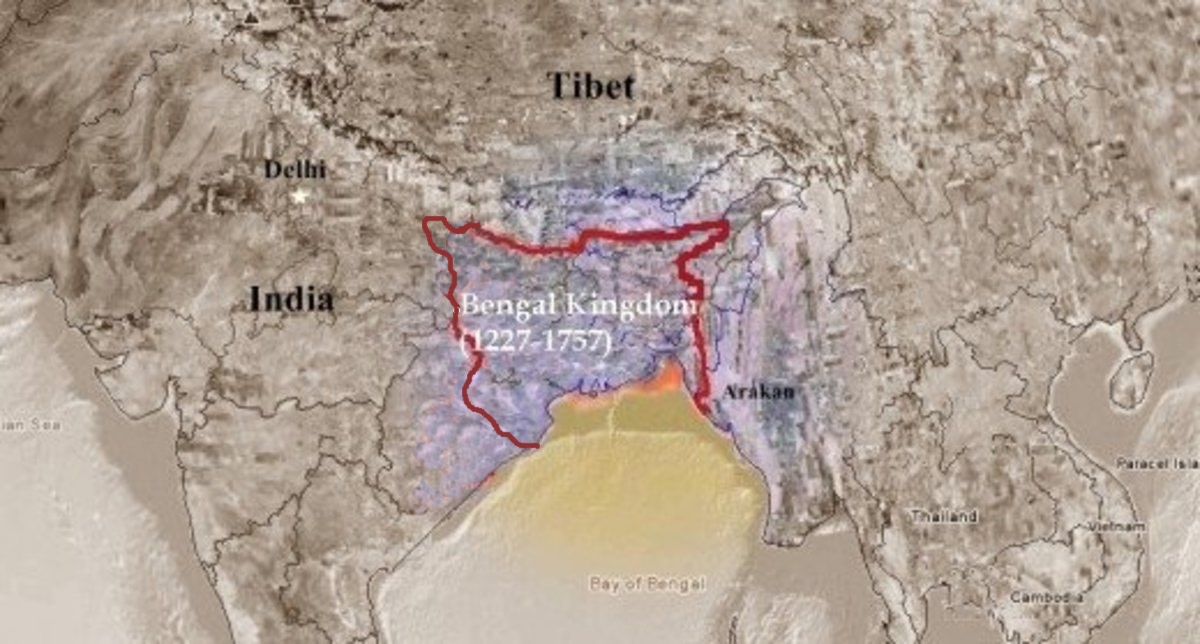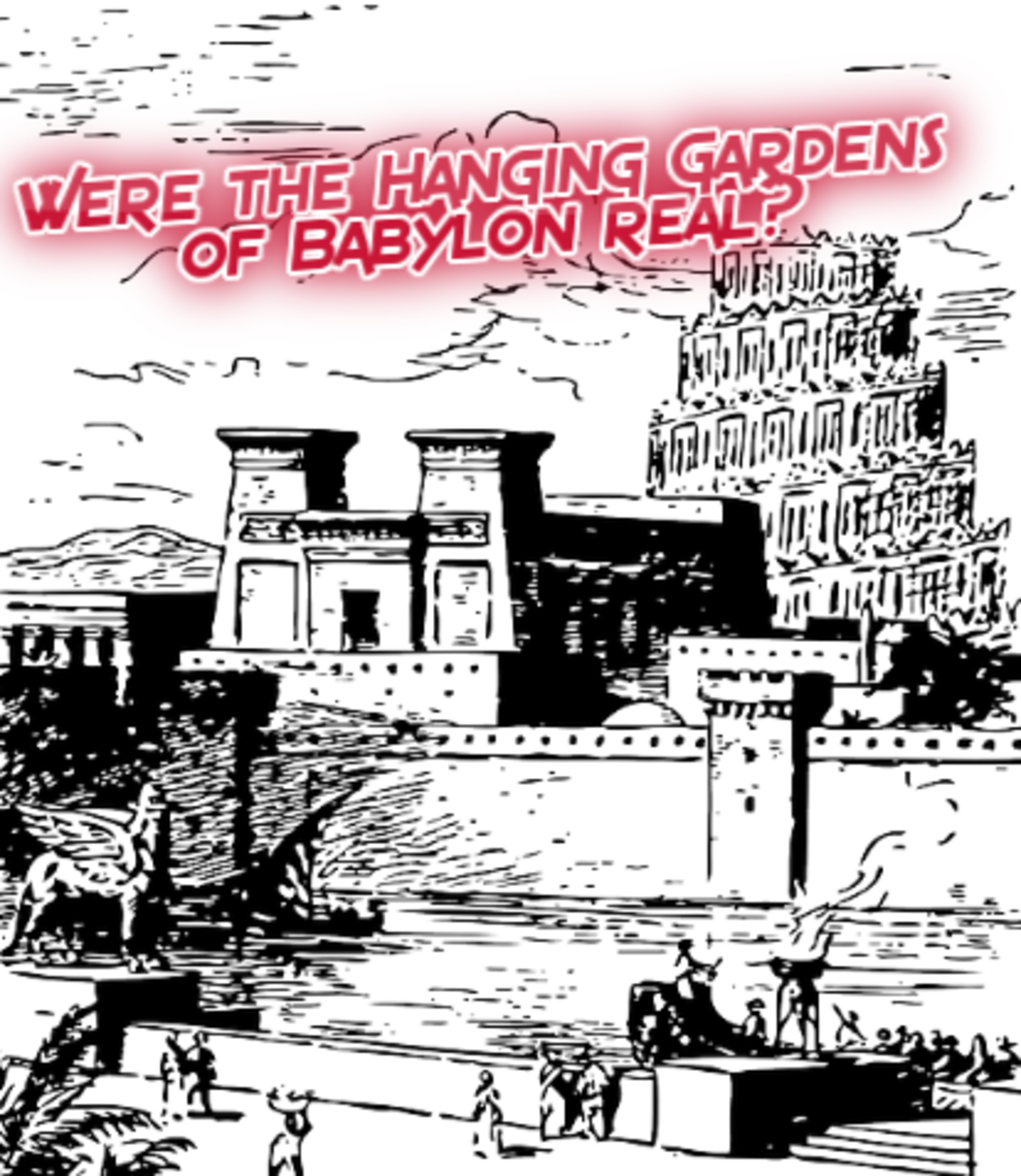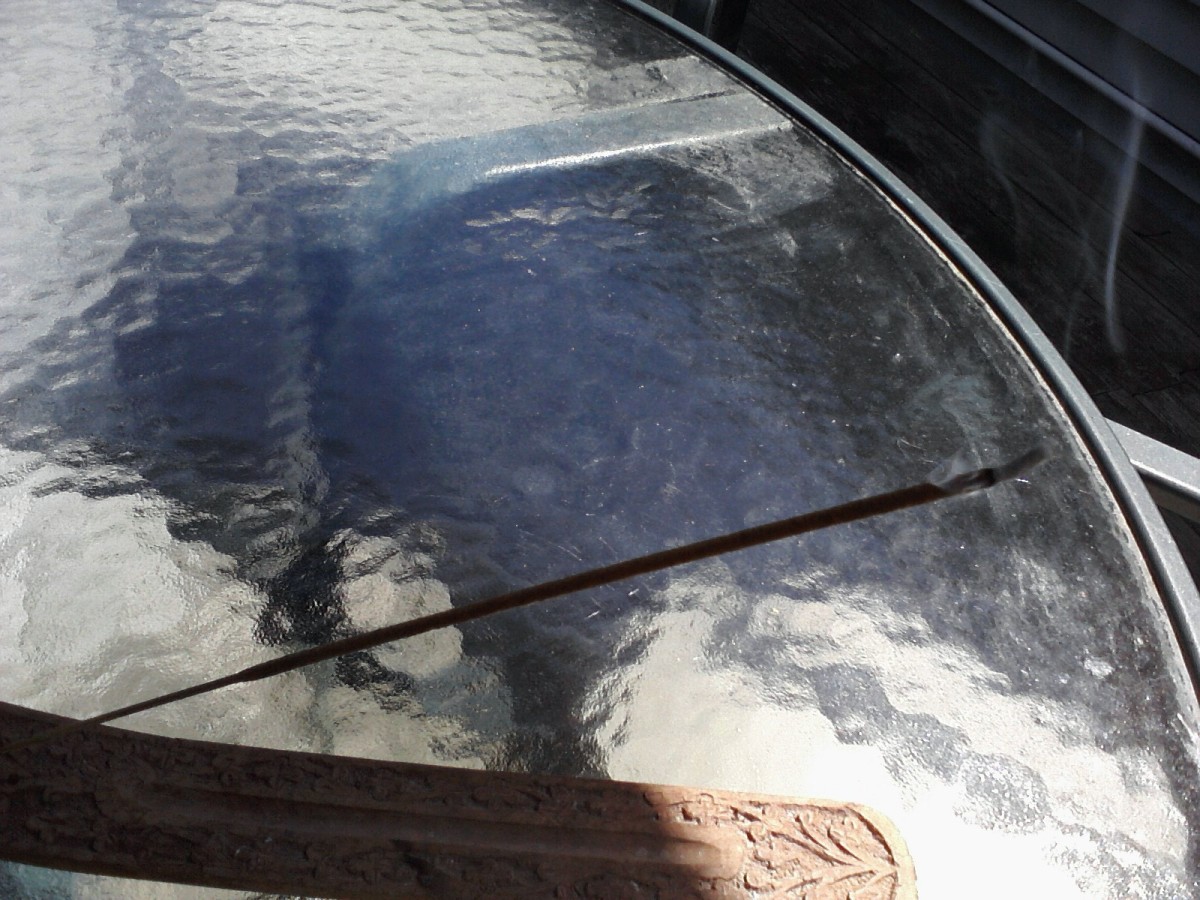Bible Pictures - ancient cities - Rome
ROME, the famous capital of the ancient world
ROME, the famous capital of the ancient world, is situated on the river Tiber, at a distance of fifteen miles from its mouth. The seven hills which formed the nucleus of the ancient city stand on the left bank. In the engraving given here the Cathedral of St. Peter's is seen in the background, while on the left is the Castle of St. Angelo, the ancient Mole of Hadrian, with the Tiber in the foreground. Rome is mentioned in the books of Maccabees for the first time in the Hebrew Scriptures. It is also mentioned in the Acts of the Apostles, the Epistle to the Romans, and the Second Epistle to Timothy.
View of Rome
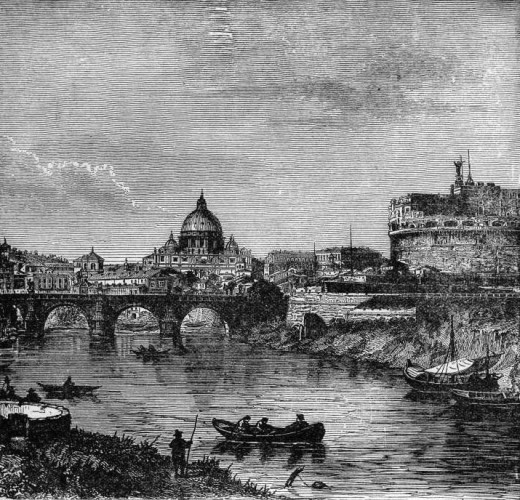
The Jews at Rome
The conquests of Pompey seem to have given rise to the first settlements of the Jews at Rome. The Jewish King Aristobulus and his son formed a notable part of Pompey's triumphal procession, and many Jewish captives and emigrants were brought to Rome at that time. Many of these Jews were made freedmen. Julius Caesar showed them some kindness, and they were favored also by Augustus. Claudius, on the contrary, commanded all Jews to depart from Rome, on account of tumults connected, possibly, with the preaching of Christianity at Rome. This banishment cannot have been of long duration, for we find Jews residing at Rome apparently in considerable numbers at the time of St. Paul's visit. It is chiefly in connection with St. Paul's visit that Rome comes before us in the Bible.
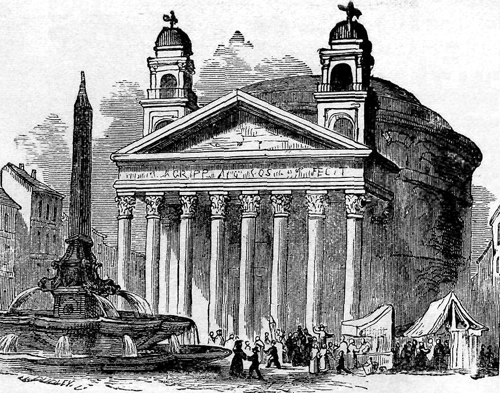
The Rome of the apostle's day
The Rome of the apostle's day was a large and irregular mass of buildings unprotected by an outer wall; for it will be remembered that St. Paul's visit lies between two important epochs, viz. : its restoration by Augustus, and its restoration by Nero. The streets were generally narrow and winding, flanked by densely crowded lodging-houses of great height. St. Paul's first visit to Rome took place before the Neronian conflagration; but even after the restoration of the city, which followed upon that event, many of the old evils continued. The population of the city has been variously estimated at from half a million to over eight millions. Probably Gibbon's estimate of one million two hundred thousand is nearest the truth. One-half of the population consisted, in all probability, of slaves. The larger part of the remainder consisted of pauper-citizens, supported in idleness by the miserable system of public gratuities. There appears to have been no middle class, and no free industrial population. Side by side with the wretched classes just mentioned was the comparatively small body of the wealthy nobility, of whose luxury and profligacy we hear so much in the heathen writers of the time. Such was the population St. Paul found at Rome at the time of his visit.
View of Rome
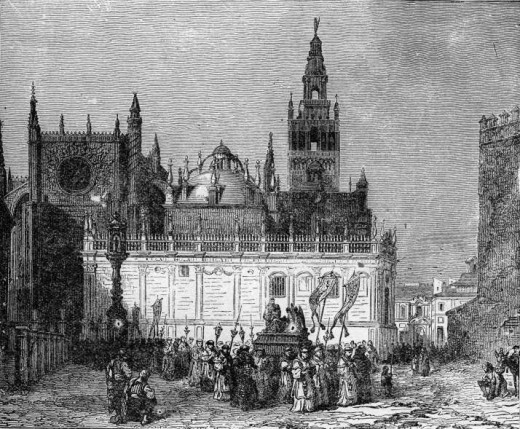
Places of interest
The localities in Rome, of interest to the student of the New Testament, are few in number, and rely for their authenticity mainly upon tradition. In the modern city, the grand cathedral of St. Peter's is the most conspicuous object. It is by common consent the greatest and grandest of all Christian churches. The body of the Apostle Peter is believed to have been finally buried on the spot now covered by the dome of the cathedral. The large building on the reader’s right is the palace of the Vatican, the residence of the Popes of Rome. It stands on the site of the gardens of the Emperor Nero—a site memorable in the annals of Christian martyrdom.
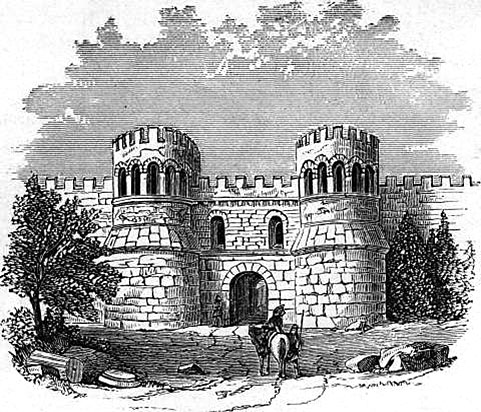
Places connected with St. Paul
The other localities in and about Rome connected with the Apostolic era are the Appian Way, by which St. Paul approached the Eternal City; the Mamertine prison, in which he was confined, which was built by Ancus Martius, near the Forum, and which still exists beneath the church of San Guiseppe dei Falegnami; the supposed scene of St. Paul's martyrdom on the Ostian road ; the Ostian Gate, by which he left the city to be offered up for his faith; the chapel Domine quo Vadis, on the Appian Road, the scene of the beautiful legend of our Lord's appearance to St. Peter as he was escaping from martyrdom; and the Catacombs, which were the places of refuge, and the burial-places of the early Christians in the days of their persecution.
St. Peter and the Vatican Rome
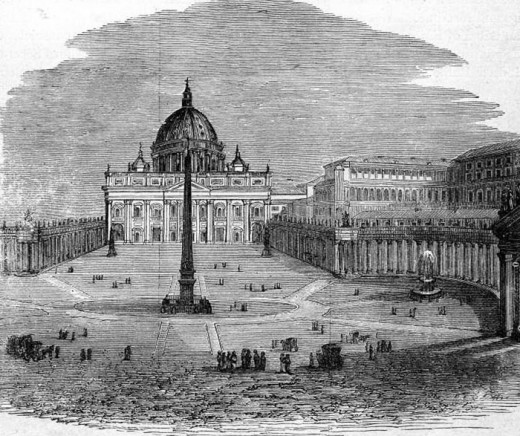
Citadel of the Eternal City
Among the many interesting objects in Rome is the Castle of St. Angelo, which may be regarded as the citadel of the Eternal City. It was built by the Emperor Hadrian as a burial-place for himself and family, and was one of the most splendid structures of ancient Rome. It was adorned with a great number of statues executed in the highest style of the sculptor's art, and was approached by a magnificent bridge. After the downfall of the Empire, this splendid Mausoleum was converted into a fortress, and was several times besieged and carried by storm. In one of these battles the statues which adorned the building were broken off by the garrison, and hurled down upon the heads of
More Bible Pictures
- Bible Pictures
From: The Devotional and Practical Pictorial Family Bible, Copyright, by J. R. Jones, 1879.

